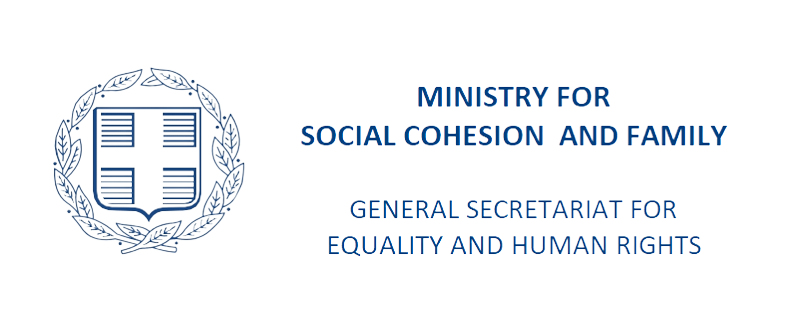Gender-disaggregated data on women in power and decision-making in Greece (November 2017)
The English version of the twelfth comprehensive e-bulletin of the Observatory of the General Secretariat for Gender Equality (GSGE), i.e. the governmental organization in charge of equality between women and men, has been uploaded on its website:
It deals with the thematic area of Women in Decision-Making and includes three fields of power: political, social and economic. For the fields in question, indicators that evaluate women’s involvement in power and decision-making are listed below.
- Three indicators are used for the evaluation of economic power:
- percentage of women and men in Central Banks, by gender and administration level
- percentage of women and men in the top 50 companies’ director boards and,
- number of women and men in Chambers’ Administrative Committees.
In the last five years, there has been a small increase in the rate of women members in the top 50 companies’ director boards in Greece, including also some periods of decrease. The increase is estimated at 1,9%, i.e. just 8 more women members. For the same period, the increase in EU-28 reaches 10.8%. In Greece, the highest percentages appear in the first semester of 2015: 10,30%, thus 89,70% for men.
According to the members’ list of the Central Chamber Union of Greece, as published in the Union’s official site, only 3.74% of the Chambers’ Administrative Committees consist of women; that is 11 women, in opposition to 283 men, in a total of 294 Committee members (including presidents).
- Participation of women in political power is evaluated by indicators that estimate the percentage of women and men in:
- the European Parliament
- the Greek Parliament
- the Supreme Courts and,
- the Public (Director’s) Boards.
Participation rate of women in the Greek Parliament reaches 18,33%, i.e. 55 women in a total of 300 representatives. According to the World Economic Forum’s “Global Gender Gap Report 2017”, 21,10% of women hold Minister chairs in the Greek Parliament, in opposition to 78,90% Minister chairs held by men.
- Social power refers to the participation of women in unions and associations (e.g. sport, cultural, social), in mass media as well as in the academic /research sector. No specialized indicators have been developed for this field, so it is partially covered by indicators for media and education. Indicatively, in Greek soccer, the administrative boards of the 4 most popular clubs (AEK, Olympiakos, Panathinaikos, PAOK), according to information available on their official sites, include only 1 woman in a total of 33 board members.
It is noted that the GSGE is implementing a flagship project on service organisation for the integration, monitoring and evaluation of gender equality policies in all aspects of public sector action. The aim is to support the public administration and local authorities in the design, implementation and evaluation of policies with detailed data on equality issues.
The specialized website http://paratiritirio.isotita.gr/genqua_portal/ serves as a portal on useful data divided among the twelve priority areas of the Beijing Platform for Action (BPfA). The access is free and open to all Governmental and Non-Governmental Organizations and Institutions, as well as to all citizens and individuals. In that way, everyone can have accurate statistical background whenever he/she designs, implements or evaluates policies on gender equality aiming at the advancement of the status of women and girls in Greece.
Moreover, it is underlined that on page 40 at the 2015 Annual Report on Equality between Women and Men in the European Union (European Commission, March 2016, http://ec.europa.eu/justice/gender-equality/files/annual_reports/2016_annual_report_2015_web_en.pdf ) there has been a positive reference to the specific Greek project.
The e-bulletins take advantage of data derived from the Hellenic Statistical Authority (ELSTAT) as a follow-up of the activation of a Protocol of Cooperation between the General Secretariat for Gender Equality and ELSTAT, and they are also supported by lively graphs, diagrams and charts made solely by the employees of our organization.
Here is the list with the English version of the previous eleven e-bulletins with gender-disaggregated data on the status of the female population in Greece:
– Women and Poverty (March 2016):
– Women in Decision-Making (May 2016):
http://old.isotita.gr/var/uploads/ANNOUNCEMENTS/2016/Paratiritirio_Second%20report_eng.pdf
– Women and Health (September 2016):
– Women and Economy (October 2016):
– Women and Armed Conflicts (December 2016):
– Women and Health (January 2017):
– Violence against Women (March 2017):
– Women and Health (April 2017):
– Girls and Education (July 2017):
http://www.isotita.gr/wp-content/uploads/2017/07/Observatory-9th-e-bulletin-Girls-Education.pdf
– Women’s Education and Training (September 2017):
http://www.isotita.gr/wp-content/uploads/2017/09/Observatory-10th-e-bulletin-ICT.pdf
– Women and Economy: part-time employment (October 2017):
In that way, the gaps are revealed and all stakeholders are invited to common action in favour of substantive equality between women and men in all aspects of public and private life.




